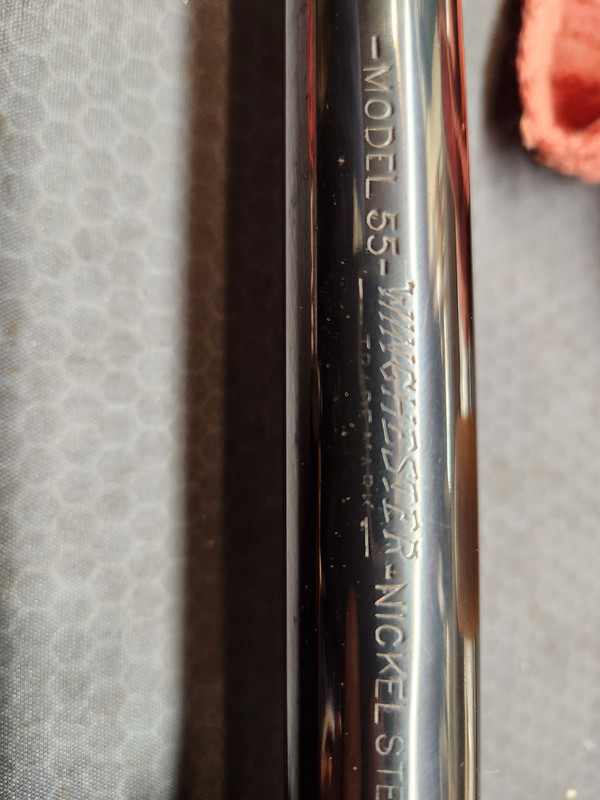January 28, 2016
 Offline
OfflineOK fellas what say thee? I picked up a Model 55 that is in about 95+%, one of those to good to be true guns. The wood only has a couple small nicks and wood to metal fit is perfect. The muzzle has some pitting and appears blued. Here are some pics. I realize the pics are pics but any thoughts on original or refinished?


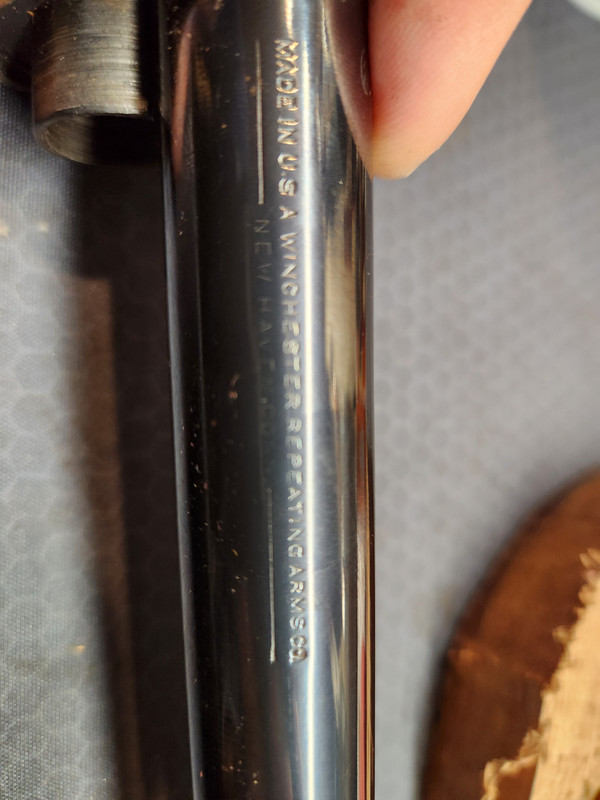

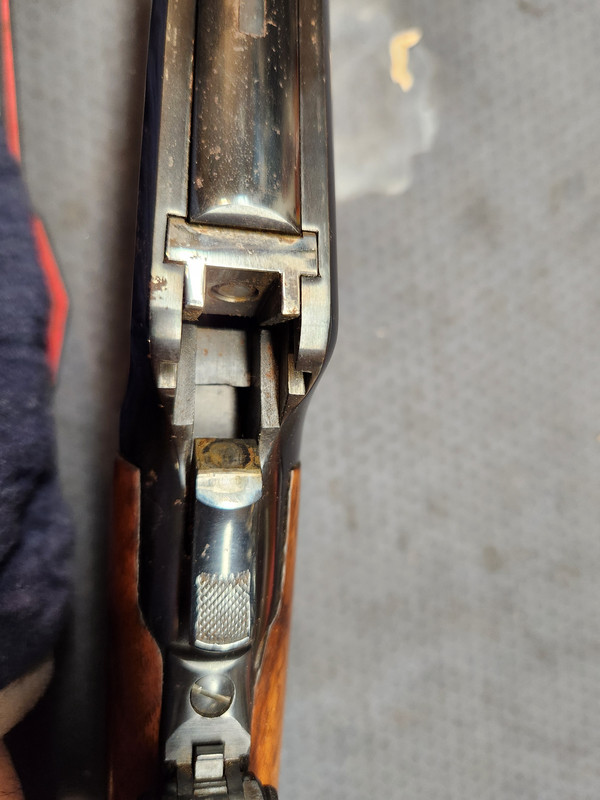

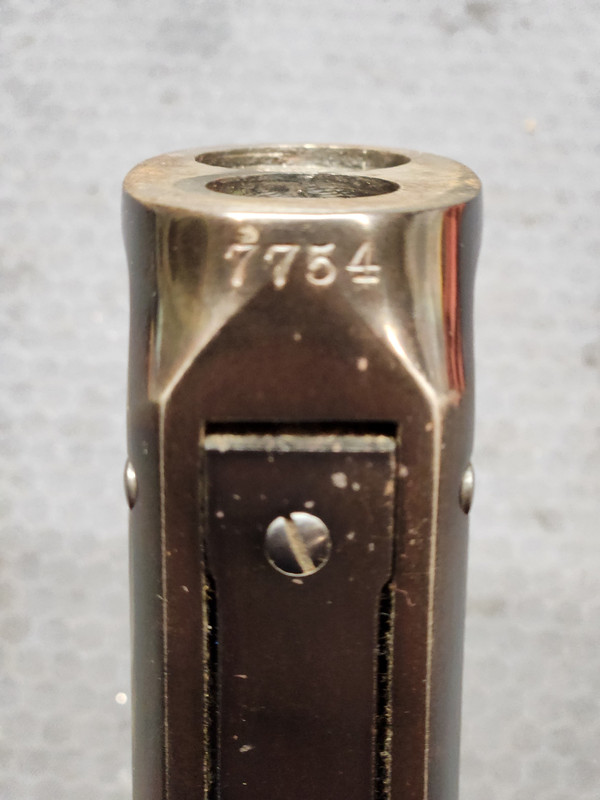

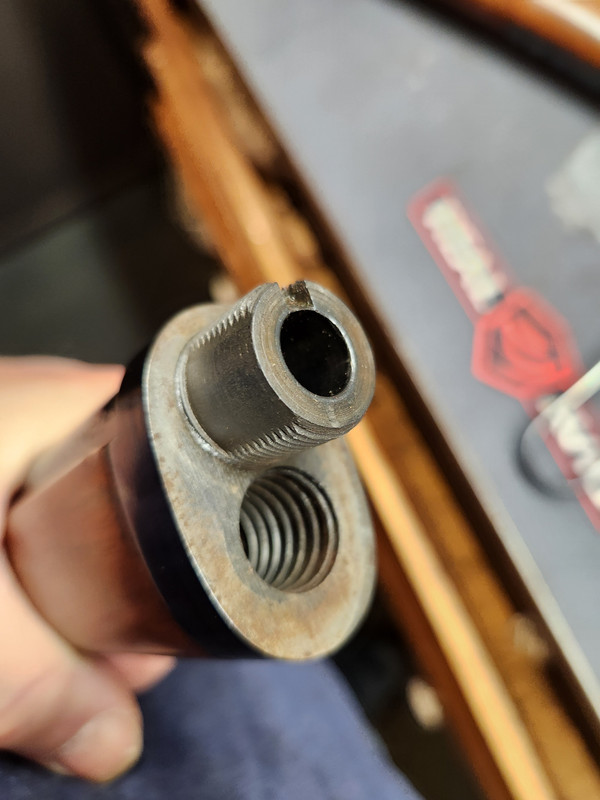

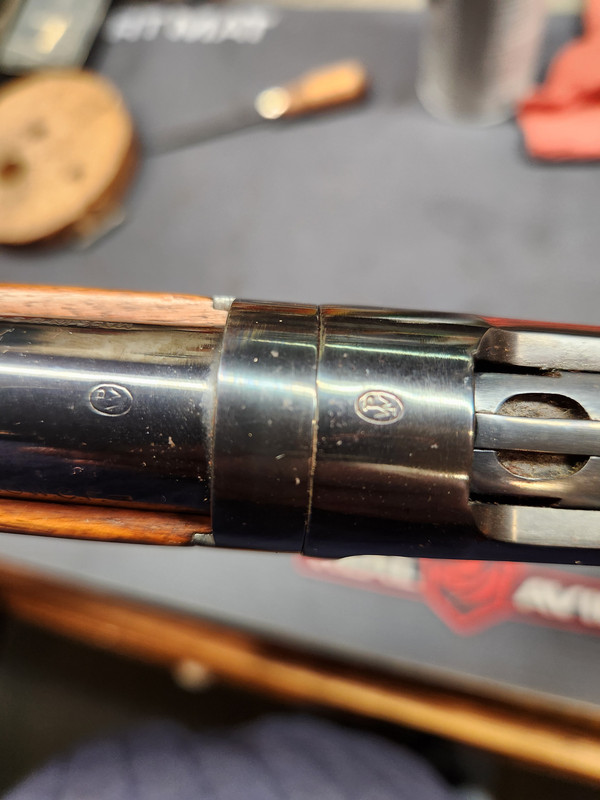

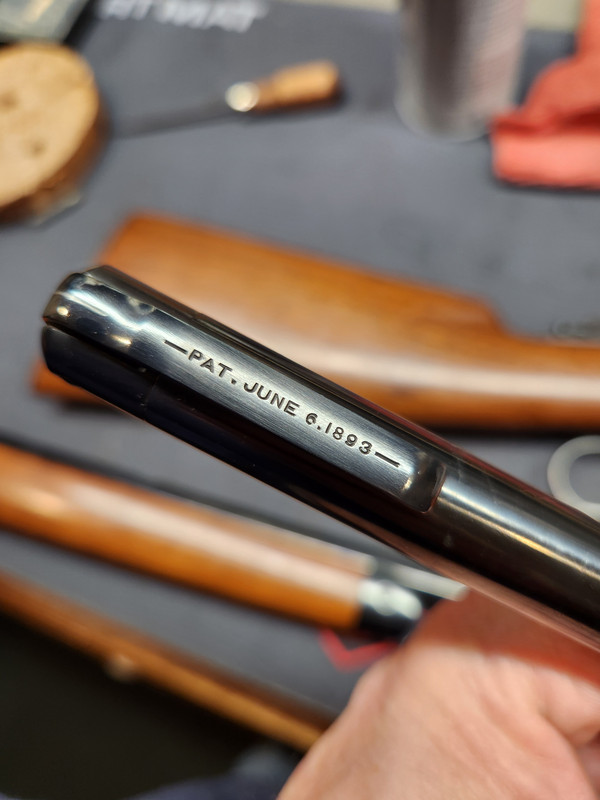

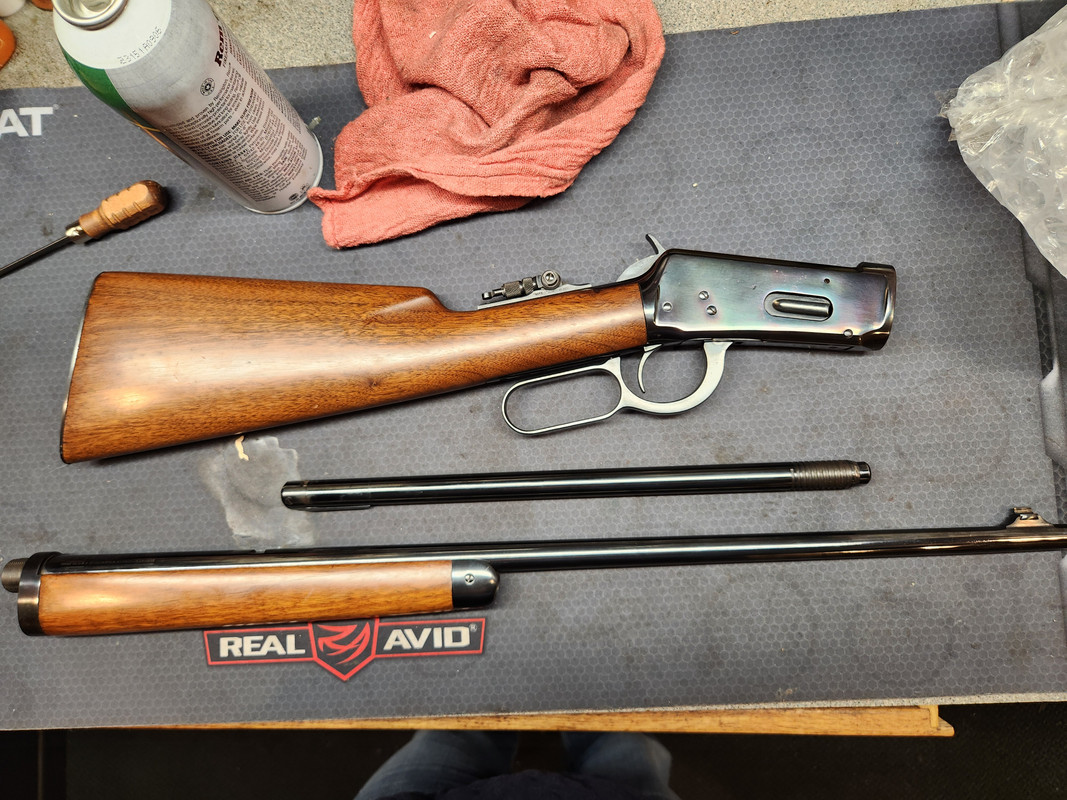

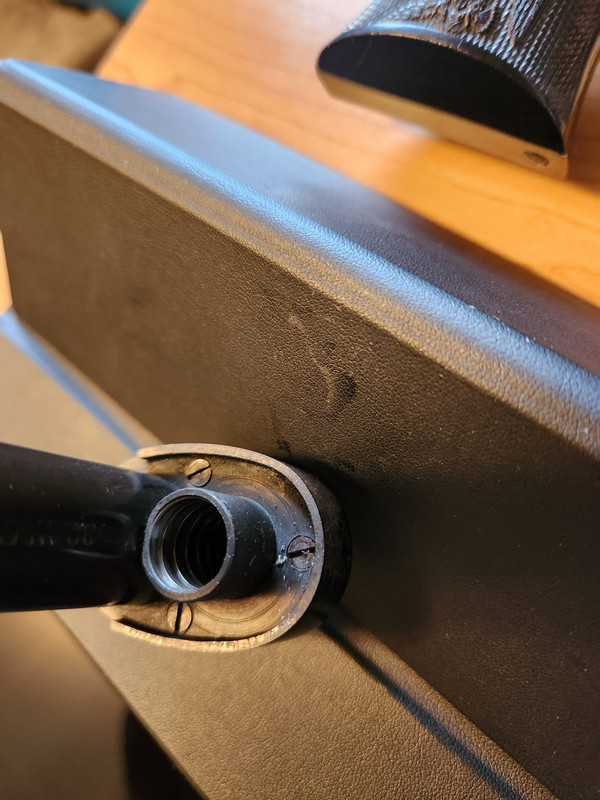

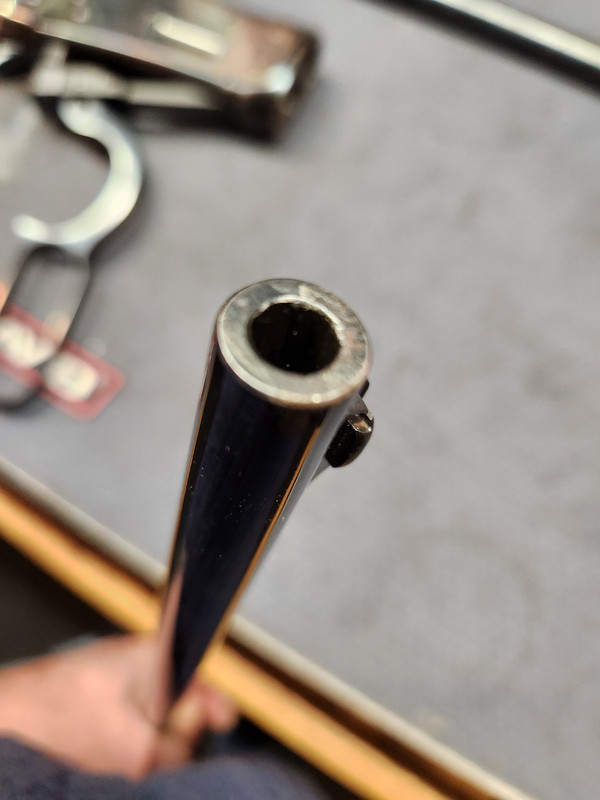

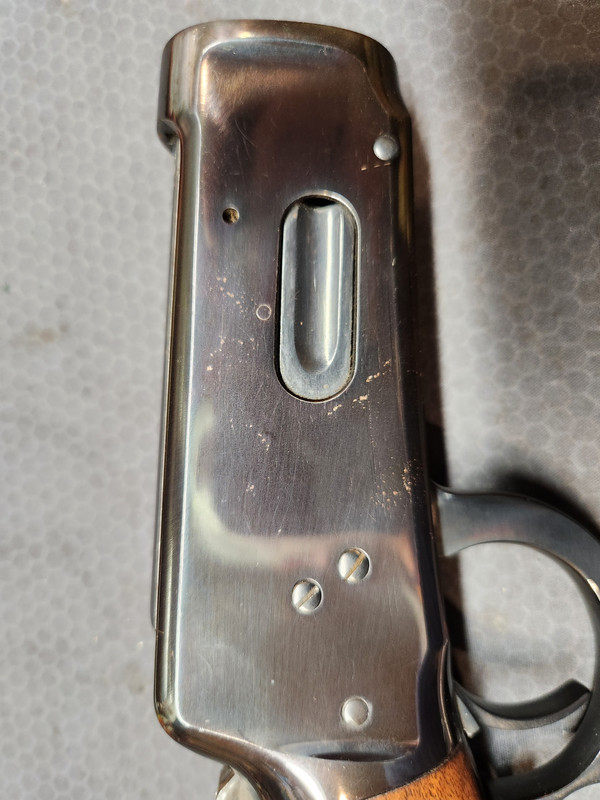

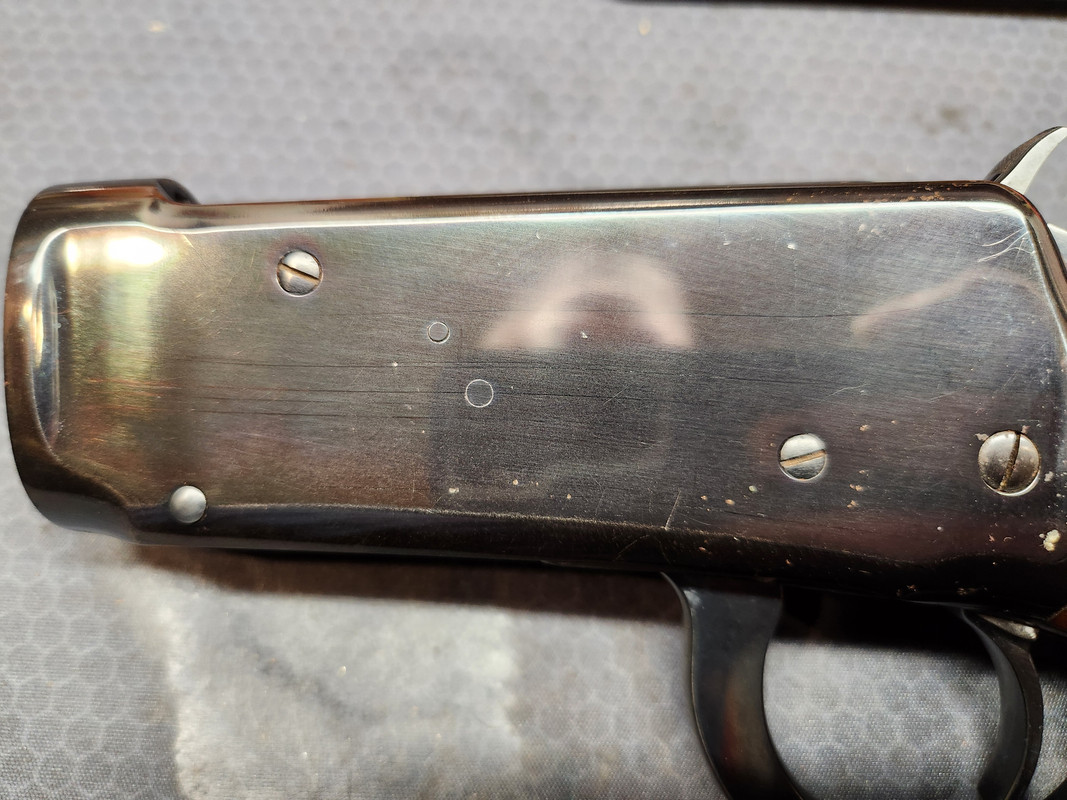

May 23, 2009
 Offline
OfflineBluing is way too black.
What is it in modern bluing that makes it so dark black? Is it simply too much salt? Or some alternate chemical that is no longer used or substituted?
Sincerely,
Maverick
![]()
WACA #8783 - Checkout my Reloading Tool Survey!
https://winchestercollector.org/forum/winchester-research-surveys/winchester-reloading-tool-survey/
December 31, 2012
 Offline
OfflineThe M55 is prone to having badly flaked receivers. A lot of this model have been redone. I have a takedown and sold frame and both exhibit a certain amount of receiver flaking. I just accept this as the norm. I would never think of re bluing these rifles. I would rather live with the flaking. Big Larry
January 28, 2016
 Offline
OfflineThe gun was purchased with fingers crossed. Seller is a dealer who felt pretty certain it was original. Pictures he sent were of low quality. He agreed to refund full amount if I was not happy with the gun so I took a chance. It is handsome but it’s going back. Thanks for the input.
January 20, 2023
 Offline
Offlineclarence said
mark minnillo said
Seller is a dealer who felt pretty certain it was original.
How many thousands of guns have passed through his hands, yet he felt “pretty certain” about a reblue as obvious as this?
“When in doubt, do without.” And stay away from a dealer who would say “pretty sure” about this particular metal finish. Is this M55 in a serial range where the receivers were still heat blued, as opposed to Dulite? To some extent, the level of polishing affects the “blackness” of a hot salts tank blue.
- Bill
WACA # 65205; life member, NRA; member, TGCA; member, TSRA; amateur preservationist
"I have seen wicked men and fools, a great many of both, and I believe they both get paid in the end, but the fools first." -- David Balfour, narrator and protagonist of the novel, Kidnapped, by Robert Louis Stevenson.
April 15, 2005
 Offline
OfflineZebulon said
clarence said
mark minnillo said
Seller is a dealer who felt pretty certain it was original.
How many thousands of guns have passed through his hands, yet he felt “pretty certain” about a reblue as obvious as this?
“When in doubt, do without.” And stay away from a dealer who would say “pretty sure” about this particular metal finish. Is this M55 in a serial range where the receivers were still heat blued, as opposed to Dulite? To some extent, the level of polishing affects the “blackness” of a hot salts tank blue.
The Model 55 was never factory Dulite blued. Winchester did not adopt that type of bluing until several years after the Model 55 was discontinued. The Model 64s were Dulite blued.
Bert
WACA Historian & Board of Director Member #6571L

January 20, 2023
 Offline
OfflineBert H. said
Zebulon said
clarence said
mark minnillo said
Seller is a dealer who felt pretty certain it was original.
How many thousands of guns have passed through his hands, yet he felt “pretty certain” about a reblue as obvious as this?
“When in doubt, do without.” And stay away from a dealer who would say “pretty sure” about this particular metal finish. Is this M55 in a serial range where the receivers were still heat blued, as opposed to Dulite? To some extent, the level of polishing affects the “blackness” of a hot salts tank blue.
The Model 55 was never factory Dulite blued. Winchester did not adopt that type of bluing until several years after the Model 55 was discontinued. The Model 64s were Dulite blued.
Bert
Well, not that there was any doubt otherwise, but even I can tell the receiver is not charcoal blued. My understanding of the coloring method used on steel Winchester receivers before the Dulite hot salts tank method was adopted, was by baking them in a gas fired oven together with sperm whale oil and bone charcoal, which also may have had the effect of heat treating the steel to some extent. I have seen this method referred to as either the “Carbona” or “Carbonia” process, a proprietary name. I’ve read the American Gas Furnace Company manufactured the ovens. I know that Colt’s and Smith & Wesson employed a similar method but don’t know if it was proprietary to them or licensed from whoever owned the Carbona/Carbonia process. Please enlighten me, if the OP doesn’t object. (Earlier I used the term “heat blue” incorrectly – I’ve since read that is the process also known as “nitre” or “temper” bluing and is typically used to color small parts.)
- Bill
WACA # 65205; life member, NRA; member, TGCA; member, TSRA; amateur preservationist
"I have seen wicked men and fools, a great many of both, and I believe they both get paid in the end, but the fools first." -- David Balfour, narrator and protagonist of the novel, Kidnapped, by Robert Louis Stevenson.
November 1, 2013
 Offline
OfflineZebulon saidMy understanding of the coloring method used on steel Winchester receivers before the Dulite hot salts tank method was adopted, was by baking them in a gas fired oven together with sperm whale oil and bone charcoal, which also may have had the effect of heat treating the steel to some extent. I have seen this method referred to as either the “Carbona” or “Carbonia” process, a proprietary name.
“Machine blued” is a term used to distinguish this process from the much older one of baking parts in an iron vessel packed with ground charcoal. I believe charcoal dust was blown into the oven to circulate around the parts suspended on wires, or some such arrangement; I’ve got a detailed description of the process if I could remember where I found it, probably in one of my gunsmithing books.
January 20, 2023
 Offline
Offlineclarence said
Zebulon saidMy understanding of the coloring method used on steel Winchester receivers before the Dulite hot salts tank method was adopted, was by baking them in a gas fired oven together with sperm whale oil and bone charcoal, which also may have had the effect of heat treating the steel to some extent. I have seen this method referred to as either the “Carbona” or “Carbonia” process, a proprietary name.
“Machine blued” is a term used to distinguish this process from the much older one of baking parts in an iron vessel packed with ground charcoal. I believe charcoal dust was blown into the oven to circulate around the parts suspended on wires, or some such arrangement; I’ve got a detailed description of the process if I could remember where I found it, probably in one of my gunsmithing books.
Good evening, Clarence. I’ve got an edition of Dunlop’s Gunsmithing. Maybe it’s in there. Yes, I’ve understood “machine bluing” to indicate a rotating gas fired oven that would circulate the charcoal dust over and around stationary suspension rails from which the parts were hung. Somewhere in a Gun Digest there’s a black & white pictorial essay showing the various jobs in the Smith & Wesson plant, one of which illustrates one of these ovens being loaded with parts. I’m not sure how the sperm whale stuff was used, or if it was. Maybe that was just the earlier method of packing a stationary vessel. I know that it made a color closer to blue than black – at least on the receiver of my 1955 Browning Auto-5. At that point in time, FN was still machine bluing the receivers and rust bluing the barrels (likely because of the barrel ribs, although mine wears a plain barrel) of that model.
- Bill
WACA # 65205; life member, NRA; member, TGCA; member, TSRA; amateur preservationist
"I have seen wicked men and fools, a great many of both, and I believe they both get paid in the end, but the fools first." -- David Balfour, narrator and protagonist of the novel, Kidnapped, by Robert Louis Stevenson.
January 20, 2023
 Offline
OfflineFrom Dunlop’s chapter on bluing, I’ve learned that “Carbonia” was the name of a pre-mixed powder containing charcoal and other materials, sold by the American Gas Furnace Company.
UPDATE: To the contrary, Major D. B. Wesson has been quoted as saying Carbonia is an oil, “Carbonia Oil”, that contains pine tar and was used in combination with charred bone in AGF rotating ovens. Carbonia Oil was sold to S&W by AGF.
- Bill
WACA # 65205; life member, NRA; member, TGCA; member, TSRA; amateur preservationist
"I have seen wicked men and fools, a great many of both, and I believe they both get paid in the end, but the fools first." -- David Balfour, narrator and protagonist of the novel, Kidnapped, by Robert Louis Stevenson.
November 1, 2013
 Offline
OfflineZebulon said
From Dunlop’s chapter on bluing, I’ve learned that “Carbonia” was the name of a pre-mixed powder containing charcoal and other materials, sold by the American Gas Furnace Company.
That’s a logical name for their product, but I think the term was in use before the machine bluing process was developed; would be interesting to know if they trademarked, or tried to, that name. None of my gunsmithing books discuss the machine process, because it’s not suitable for small shops; easier to rust blue a few parts at a time.
1 Guest(s)


 Log In
Log In





